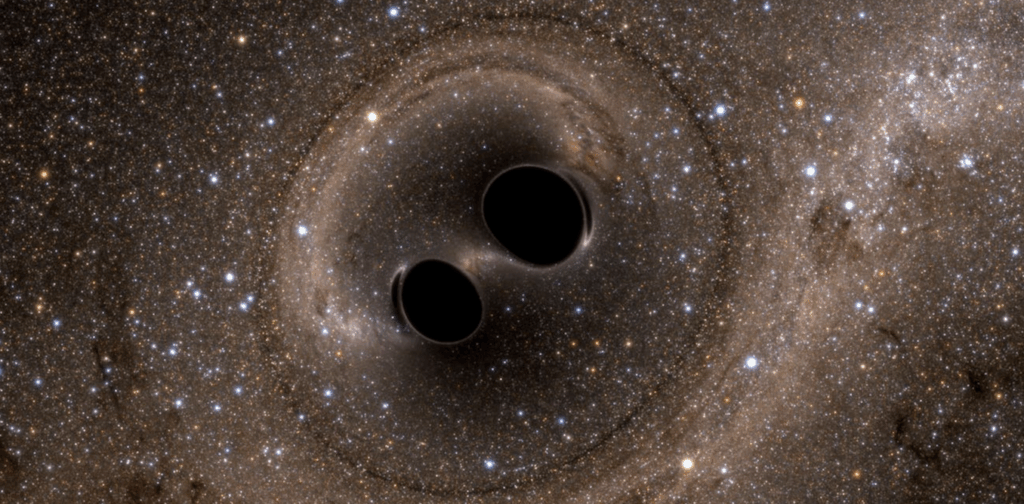
Black holes, known for their immense gravitational pull, are among the most enigmatic phenomena in the universe. While scientists have long understood the existence of supermassive black holes at the centers of galaxies and the formation of smaller stellar mass black holes from dying stars, a mystery persists: the nature of black holes that fall between these two categories. These intermediate black holes, ranging from a few hundred to a few hundred thousand times the mass of the Sun, remain elusive and are the focus of ongoing astronomical research.
In a recent study, a team of astronomers, including researchers Krystal and Karan, collaborated with postdoctoral researcher Anjali Yelikar to explore these mysterious celestial objects. Their work, which involved analyzing gravitational waves, has provided new insights into the existence and characteristics of these intermediate black holes.
Unraveling the Mystery of Intermediate Black Holes
The search for intermediate black holes is akin to solving a cosmic puzzle. These black holes are difficult to detect due to their size, which falls between the well-documented stellar and supermassive black holes. The team utilized data from the Laser Interferometer Gravitational-Wave Observatory (LIGO) to identify potential candidates for these elusive objects.
LIGO, renowned for its advanced laser and optics systems, allows scientists to observe the “sound” of black holes merging, providing critical data on their mass and location. The researchers analyzed 11 black hole merger candidates from LIGO’s third observing run, focusing on gravitational wave signals that suggested the presence of intermediate black holes.
The Baseball Game Analogy
To illustrate the complexity of detecting these black holes, the researchers likened the process to attending a baseball game with obstructed views and overwhelming noise. By using sophisticated algorithms to filter out background noise, scientists can “hear” the gravitational waves emitted by merging black holes, much like discerning the sound of a bat hitting a ball amidst the crowd’s roar.
“With enough practice and updates to your hardware and software, you can begin following the game, getting a sense of when a ball is hit, what direction it goes, when it hits a glove, where runners’ feet pound into the dirt and more.”
The Significance of the Mass Gap
One of the key challenges in black hole research is understanding the “mass gap”—the range of black hole masses that cannot be directly formed from dying stars. Typically, stellar mass black holes are between 20 to 100 times the mass of the Sun. However, the physics of massive stars often result in explosions that leave no remnants, creating a gap in the black hole mass spectrum.
Intermediate black holes, or “lite intermediate mass black holes” (lite IMBHs), occupy this gap. They are significant because they provide clues about the universe’s evolution and the processes that lead to the formation of massive black holes. The recent study found that five of the post-merger black holes analyzed were likely in the lite IMBH range, with one parent black hole falling within the mass gap.
“We found five post-merger black holes that our analysis was 90% confident were lite IMBHs.”
Implications and Future Research
The discovery of intermediate black holes has profound implications for our understanding of the cosmos. It suggests that there are mechanisms beyond stellar collapse that can create black holes of such mass. These findings also indicate that black holes may merge more frequently than previously thought, potentially leading to the formation of even larger black holes over time.
As LIGO concludes its fourth observing run, researchers are eager to apply their analytical techniques to new data. This ongoing research aims to refine the detection of lite IMBHs and enhance our comprehension of their origins and significance.
The study not only bolsters the case for the existence of intermediate black holes but also opens new avenues for exploring how these cosmic entities contribute to the universe’s growth and evolution. As scientists continue to “listen” for gravitational waves, the hope is that further discoveries will illuminate the mysteries of these fascinating astronomical objects.







